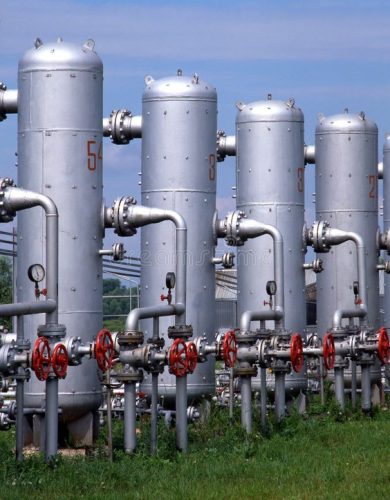Companies across industries are increasingly adopting stringent climate measures. Achieving these ambitious goals requires various technological choices and solutions, considering not only emissions but also the reliability and cost-effectiveness of technologies. According to the International Energy Agency (IEA), natural gas stands out as the cleanest fossil fuel. When used for power generation, it produces fewer greenhouse gas emissions than coal or oil, roughly half as much.
Moreover, natural gas is well-suited for energy-intensive industries requiring flexible fuel supply that can adjust to demand fluctuations.
Finally, natural gas power generation serves as an optimal “peak” solution for compensating high peak power demand and/or intermittent renewable energy.
However, with the influx of renewable energy investments, what is the future of natural gas as a fuel, and what are the decarbonization options?
If natural gas continues to be part of our energy mix, we must decarbonize its extraction, processing, and usage. Emissions associated with natural gas must be addressed.

Enhancing energy efficiency stands out as the simplest and most cost-effective decarbonization method in the natural gas industry.
Unexpected methane leaks commonly occur at gas well sites or during processing and transportation. Leaks may happen due to challenges in ensuring leak-proof gas connections. Additionally, gas emissions may occur when liquefied natural gas (LNG) moves between storage systems.
Reducing these emissions is crucial, as each leak diminishes the environmental benefits of burning natural gas instead of coal or oil. Methane is, in fact, a more potent greenhouse gas than carbon dioxide, exacerbating the issue.
Technologies like digital twins aid in real-time assessment of certain asset performances, assisting in analyzing the likelihood of leaks. Currently, AI-assisted leak detection solutions can help pinpoint leaks more quickly, enabling operators to stop leaks earlier. Combining leak detection with intrusion detection solutions can entirely prevent pipeline leaks caused by accidents.
However, there is still work to be done. Greenfield projects can utilize integrated power and process solutions to achieve savings throughout the asset’s lifecycle. Liquefaction plants can employ electrically driven technology to replace traditional combustion methods, enabling operators to produce more environmentally friendly liquefied natural gas using low-carbon or renewable electricity. Process electrification remains a crucial enabler for decarbonizing the oil and gas industry.
Furthermore, we can capture carbon dioxide generated during the liquefaction process and sequester it underground. The use of carbon capture and storage (CCS) technology helps clean up the manufacturing process. This involves separating or extracting carbon dioxide and transporting it underground, pumping it into deep reservoirs. This method prevents the release of carbon dioxide into the atmosphere, keeping it underground.
For a decarbonized energy structure, blue hydrogen is produced by combining steam methane reforming with carbon capture and storage (CCS) technology. Currently, blue hydrogen can capture 50% to 90% of the carbon dioxide produced during the reforming process.
As companies strive for decarbonization, hydrogen production will inevitably shift from gray to blue and green. Much of the discussion revolves around hydrogen, providing a low-carbon alternative for certain industries with challenging emissions reductions, such as industrial processes and transportation. The industry is exploring the capacity to reuse existing infrastructure, such as natural gas pipelines, salt cavern storage, and gas turbine power plants. Combining low-carbon or zero-carbon hydrogen production technology with emission-free power resources, such as solar, wind, nuclear, and hydropower, makes hydrogen an attractive solution in both the natural gas and power sectors. The question of when and where hydrogen becomes economically viable in the coming years is a crucial issue to address.
Blue hydrogen stands as a favorable near-term choice for low-carbon hydrogen production.
Some companies are leading the digital transformation of energy management and automation. Using IoT-supported solutions seamlessly connects, collects, analyzes, and processes real-time data, providing higher safety, efficiency, reliability, and sustainability performance for major industries, including energy and chemical sectors.
